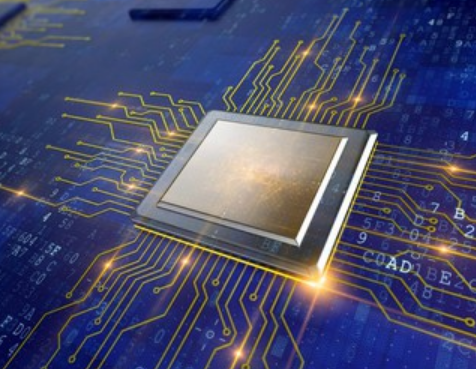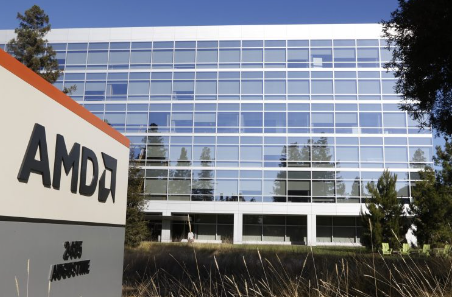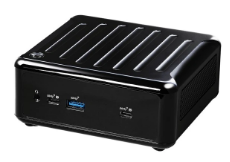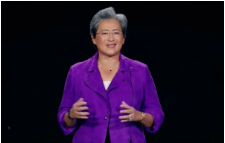- Ameya360 Component Supply Platform >
- Trade news >
- AMD Keeps Chipping Away At Intel’s Dominance
AMD Keeps Chipping Away At Intel’s Dominance
Advanced Micro Devices (NASDAQ:AMD) recently crushed Wall Street expectations thanks to the growing demand for its new chips. The Santa Clara, California-based company's revenue shot up 40% year-over-year, driven by the popularity of its Ryzen CPUs (central processing units) and Radeon GPUs (graphics processing units).
AMD's computing and graphics revenue almost doubled year-over-year thanks to the Ryzen and Radeon product lines. Meanwhile, sales of the company's EPYC server processors nearly doubled quarter over quarter, as more OEMs (original equipment manufacturers) decided to offer AMD's chips in place of Intel's (NASDAQ:INTC) for data centers and cloud computing.
AMD, however, believes that it isn't done growing yet. Management is confident that the sales momentum of Ryzen and EPYC processors won't be dying down any time soon, and it has valid reasons to believe so. This could spell trouble for Intel's businesses.

IMAGE SOURCE: GETTY IMAGES
AMD's CPU clout is increasing
Various reports suggest that AMD's CPU market share has been steadily climbing over the past few months. The chipmaker reportedly controlled 12% of the CPU market at the end of 2017, up from 9.9% at the end of 2016. Now, a 2.1 percentage point increase in the market share wouldn't be a big deal for Intel at this point, but Chipzilla investors shouldn't forget that AMD's Ryzen processor line-up wasn't out in full force in the market last year.
The first wave of Ryzen chips for desktop PCs went out in March 2017, followed by the launch of the enterprise-centric Ryzen PRO and the laptop-focused Ryzen Mobile toward the end of the year. The latest market share numbers aren't available just yet, but it wouldn't be surprising to see AMD shaving Intel's lead further in this space as Ryzen adoption is taking off.
AMD claims that 60% of its client processor revenue was delivered by Ryzen last quarter, up from the low-40% range in the final quarter of 2017. So, the launch of the entire Ryzen line-up just in time before the holiday season last year has been a boon for AMD. To keep up Ryzen's terrific momentum, AMD unveiled its second-generation Ryzen processors last month at extremely attractive prices.
For instance, the flagship Ryzen 7 2700X has a retail price of $329, which is substantially lower than last year's flagship 1800X and 1700X chips that were priced at $499 and $399, respectively. With a 17% performance boost over last year's flagship, AMD has built an impressive value proposition.
More importantly, AMD's latest flagship is cheaper than Intel's i7-8700K that carries a price of around $350, and is equipped with six cores instead of AMD's eight. A higher core count is indicative of a superior performance, so AMD is potentially undercutting Intel once again. Additionally, the launch of a new Ryzen generation means that the previous generation's offerings are getting a steep price cut.
For instance, the Ryzen 7 1800X can now be had for just $319. Not surprisingly, AMD is optimistic that 25 new Ryzen-based systems will hit the market this quarter, and the number could go up to 60 by the end of 2018.
So, Intel will be forced to lower prices to keep AMD at bay, like it had done last year before the inaugural Ryzen chips came into the market. This sounds like bad news for Chipzilla's client computing group, which saw a 4-percentage-point drop in operating margin in the recently reported first quarter, while revenue increased just 3%. The opposite movement of the revenue and the operating margin means that Intel could be feeling the heat from AMD's aggressive pricing tactics.
Additionally, Intel's processor shipment volumes were flat year over year, while AMD management claims that Ryzen shipments grew in the double digits during the first quarter of 2018. This provides a clear indication that Intel is losing ground to AMD in the CPU market, a trend that could continue because of the latter's strategy of undercutting its bigger rival.
EPYC is on a roll
Chipzilla reportedly controlled 99% of the server chip market that was worth $17.2 billion back in 2016, but AMD has started making inroads over here ever since its EPYC server processors hit the market last year. In fact, there are more than 40 EPYC-based systems now available in the market.
Not surprisingly, AMD is confident that it will be able to eke out a mid-single-digit share of the server chip market by the end of the year, potentially stalling Intel's growth. For instance, if server chip market is worth $20 billion in 2020 and Intel's market share over here drops to 95%, its server chip revenue will be $19 billion.
This means that Intel's server chip revenue would rise just 10% over a period of three years. AMD, meanwhile, could generate nearly a billion dollars in annual server chip sales, provided it hits its market share target this year. This will be a big win for AMD as it was almost non-existent in servers just a couple of years ago.
But AMD can exceed its server market share targets once the second-gen EPYC processors come into volume production in early 2018. The new processors are expected to be based on the 7-nanometer (nm) node as compared to the current generation's 14nm process node.
Chips based on a smaller process node are typically less expensive to make and are more efficient in terms of power consumption and performance. So, AMD is possibly looking to deliver a massive gain over the previous EPYC generation, which will allow it to eat further into Intel's server dominance as Chipzilla's move to the more superior 10nm process has been delayed to 2019.
Should Intel investors start worrying already?
Well, not right away. Intel is still the big fish in both the CPU and server processor markets by a fair distance. It has got huge financial muscle, superior margins, and a solid client base. AMD, on the other hand, is trying to make inroads into areas where Intel is already dominant.
But AMD could keep chipping away at Intel's lead thanks to its well-priced products and the potential technology lead that it could gain thanks to the latter's 10nm delay. Now, Intel can respond by turning up its product development moves or lower the prices of its chips to quell AMD's rise. But it needs to take quick steps as its smaller rival is making impressive progress within a short time of its products hitting the market, else Intel's growth in these markets will hit a speed bump in the long run.
Online messageinquiry

AMD Takes Center Stage at CES
- Week of hot material
- Material in short supply seckilling
| model | brand | Quote |
|---|---|---|
| MC33074DR2G | onsemi | |
| RB751G-40T2R | ROHM Semiconductor | |
| BD71847AMWV-E2 | ROHM Semiconductor | |
| TL431ACLPR | Texas Instruments | |
| CDZVT2R20B | ROHM Semiconductor |
| model | brand | To snap up |
|---|---|---|
| TPS63050YFFR | Texas Instruments | |
| BP3621 | ROHM Semiconductor | |
| IPZ40N04S5L4R8ATMA1 | Infineon Technologies | |
| STM32F429IGT6 | STMicroelectronics | |
| BU33JA2MNVX-CTL | ROHM Semiconductor | |
| ESR03EZPJ151 | ROHM Semiconductor |
- Week of ranking
- Month ranking
Qr code of ameya360 official account
Identify TWO-DIMENSIONAL code, you can pay attention to


Please enter the verification code in the image below:

























